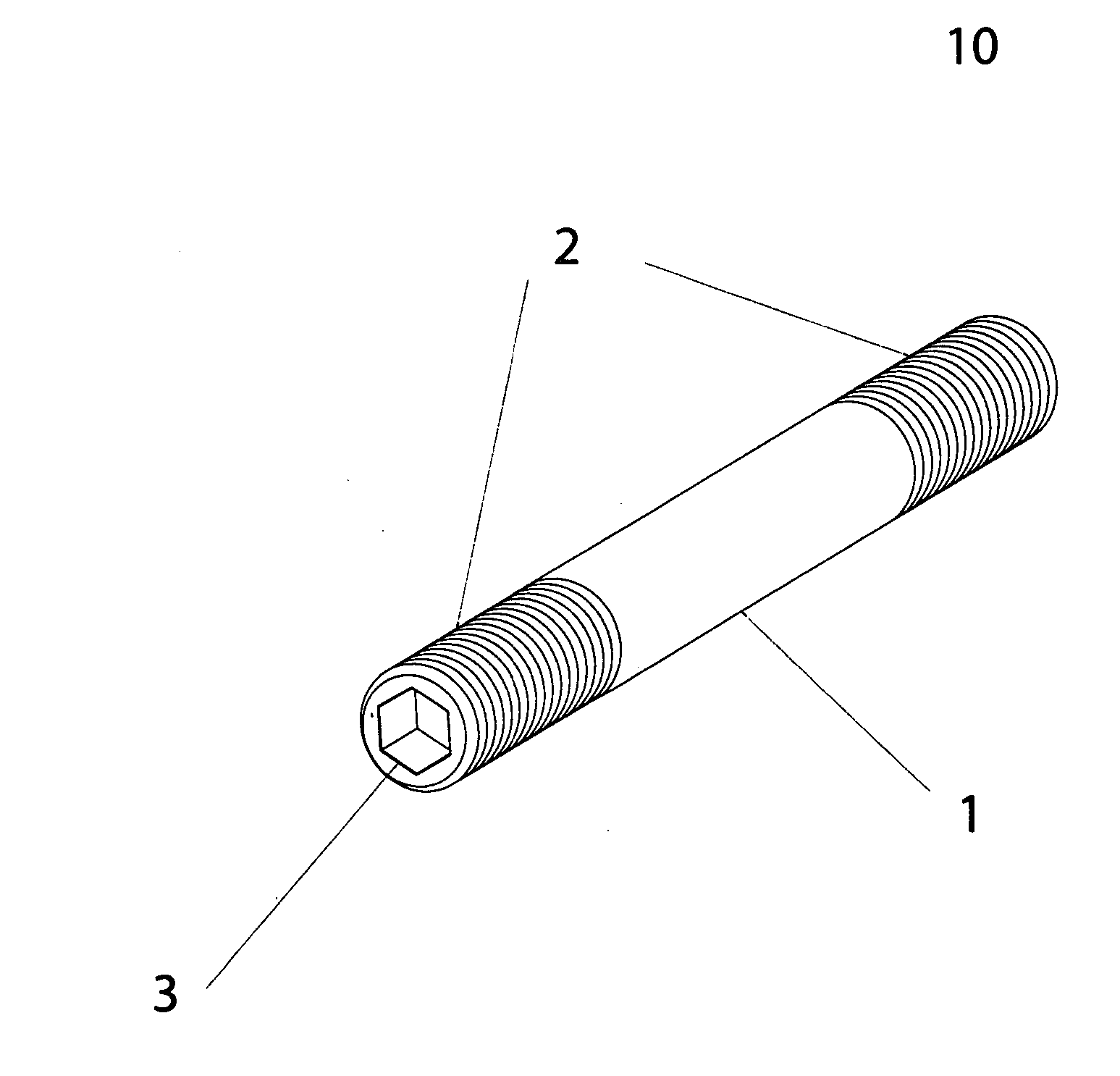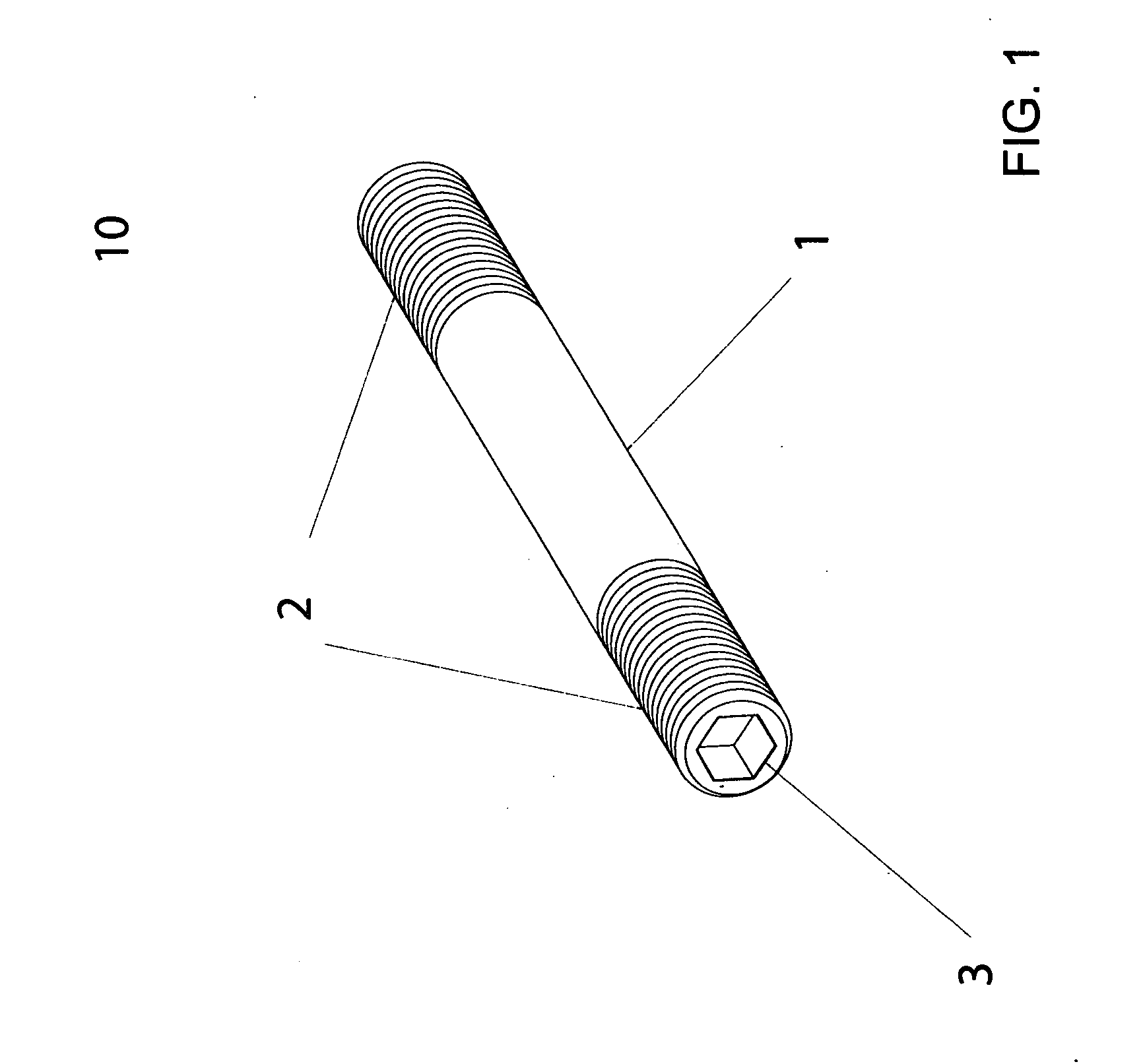Stud for parts assembly
a technology of parts and screws, applied in the direction of threaded fasteners, screws, fastening means, etc., can solve the problems of weakening the assembly without the mechanic's knowledge, reducing the ease with which objects may be assembled and disassembled, and preventing the articulation of parts
- Summary
- Abstract
- Description
- Claims
- Application Information
AI Technical Summary
Benefits of technology
Problems solved by technology
Method used
Image
Examples
Embodiment Construction
[0021] With reference to FIG. 1, a preferred embodiment of an improved stud in accordance with the present invention is shown by reference numeral 10, the basic structure of which includes a cylindrical shaft 1, threaded surfaces 2 on opposing ends of the shaft 1, and a drive recession, drive pocket, or drive receiving aperture 3.
[0022] With reference to FIG. 2, the drive recession, drive pocket, or drive receiving aperture 13 can be seen in this end view of the cylindrical shaft 11 of the present invention 20. A plane across the width of the shaft 11 is depicted along the A-B plane.
[0023] With reference to FIG. 3, the preferred embodiment of the present invention 30 is depicted as a cross-section along the shaft 21 and the A-B plane of FIG. 2. Depicted are the drive recession, drive pocket, or drive receiving aperture 23 that is intended in this embodiment to receive an alien head drive, a threaded surface 22.
PUM
 Login to View More
Login to View More Abstract
Description
Claims
Application Information
 Login to View More
Login to View More - R&D
- Intellectual Property
- Life Sciences
- Materials
- Tech Scout
- Unparalleled Data Quality
- Higher Quality Content
- 60% Fewer Hallucinations
Browse by: Latest US Patents, China's latest patents, Technical Efficacy Thesaurus, Application Domain, Technology Topic, Popular Technical Reports.
© 2025 PatSnap. All rights reserved.Legal|Privacy policy|Modern Slavery Act Transparency Statement|Sitemap|About US| Contact US: help@patsnap.com



